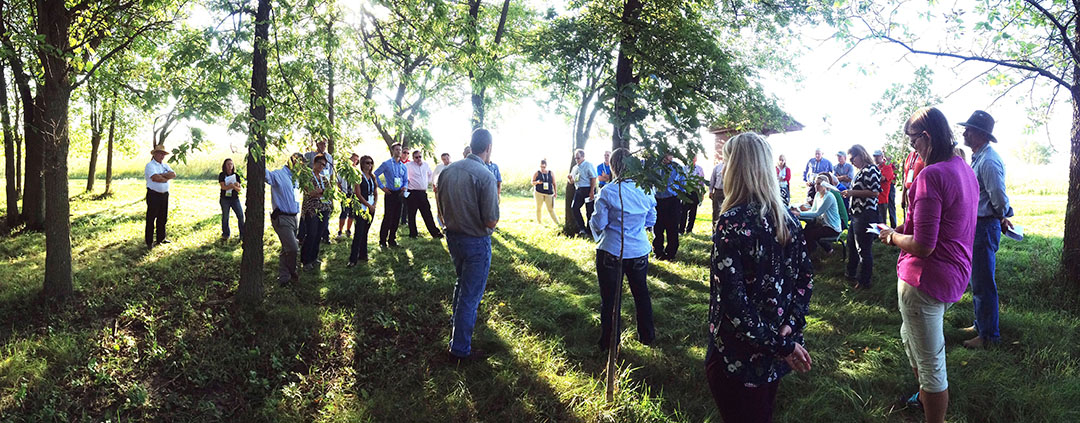
The prairie grass is tall and the flowers in bloom at Nine-Mile Prairie. This land managed by the School of Natural Resources for grassland conservation, teaching and research is neighbored closely by partners also concerned about land stewardship.
The property just east of the prairie has been in the U.S. Department of Agriculture’s Conservation Reserve Program for more than 20 years. It was reseeded with a tallgrass prairie mixture in 2012, and, after a prescribed fire this spring, started to show its worth as prairie habitat.
It’s that history and those conservation partnerships that drew the attention of the National Association of State Departments of Agriculture, which hosted its annual meeting Sept. 21 to 24 in Lincoln, and made the
230-acre Nine-Mile Prairie one of its offsite tours.
“Nine-Mile Prairie is a relatively famous native prairie site close to Lincoln,” said SNR’s Dave Wedin, director of the prairie and organizer for the tour and presentations. “CRP is the single biggest effort in grassland conservation and habitat in Nebraska and the Midwest, so it’s impact has been huge.”
In the agriculture economy, the 30-year old CRP program has had a big impact, Wedin said. In a fact sheet put together for the tour, he noted that more than 782,000 Nebraska acres are currently in federal CRP status. Annual payments from the USDA to Nebraska landowners for CRP acres are about $62 million.
“CRP is the best example of where agriculture and conservation intersect in Nebraska,” he said, and that’s why the more than 40 members of NASDA sang “Happy Birthday” to the program as they stood on the prairie.
While there, the group heard short presentations on projects going on at Nine-Mile Prairie, including grassland conservation, seeding wildflowers for pollinators, and prescribed prairie burns.
—Shawna Richter-Ryerson, Natural Resources
More details at: http:/snr.unl.edu